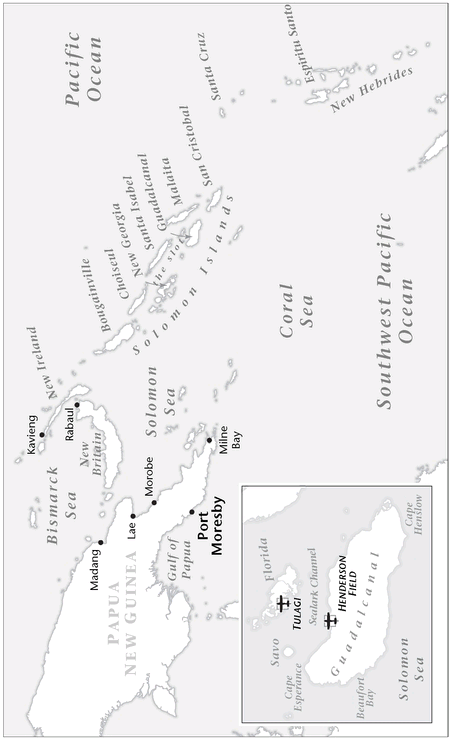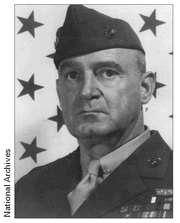War Stories II (32 page)
Authors: Oliver L. North

 AFTER ACTION REPORT
AFTER ACTION REPORT1ST AIR COMMANDOS
14 AUGUST 2004
14 AUGUST 2004
It was tragic that Wingate's Chindits were never assigned a specific rescue mission for POW slaves consigned to work on the Japanese military rail
system in Burma. There were times when LRP units were fewer than twenty-five miles from some of the 60,000 enslaved Allied prisoners of war building that infamous 260-mile-long railroad. In addition to the American, British, and Dutch POWs, the Japanese also conscripted 200,000 young Burmese men to work on the rail lineâmaking the ratio simple: 1,000 slaves for every mile of track. At the completion of this particular rail line, 16,000 Allied POWs and 100,000 civilians were dead. Four hundred and forty-six men died on every mile of the Imperial Army's Railway of Death from every conceivable cause: malnutrition, overwork, disease, dehydration, torture, and in some cases, brutal execution.
system in Burma. There were times when LRP units were fewer than twenty-five miles from some of the 60,000 enslaved Allied prisoners of war building that infamous 260-mile-long railroad. In addition to the American, British, and Dutch POWs, the Japanese also conscripted 200,000 young Burmese men to work on the rail lineâmaking the ratio simple: 1,000 slaves for every mile of track. At the completion of this particular rail line, 16,000 Allied POWs and 100,000 civilians were dead. Four hundred and forty-six men died on every mile of the Imperial Army's Railway of Death from every conceivable cause: malnutrition, overwork, disease, dehydration, torture, and in some cases, brutal execution.
Former POW Kyle Thompson survived, but he cannot forget. He says, “I was nineteen when we were captured, I had my twentieth, twenty-first, twenty-second, and twenty-third birthdays as a prisoner. So a pretty good part of my young life was sacrificed on the altar of the Japanese Imperial Army.
“After the war, many who survived being POW slave laborers of the Japanese asked for compensation from Japan because the Germans were paying reparations to their slave laborers. Our group included survivors from the Philippine Islands and the Bataan Death March and civilian internees, and we got together and filed lawsuits against the Japanese industries that used us as slave laborers without compensation during World War II. Interestingly enough, some of the big Japanese industries that exist today were involved in it. Yet our own government opposes this. The State Department, when the suit was heard in federal court, came out and sided with the Japanese. It's disappointing.”

CHAPTER 9
DEATH BY INCHES: GUADALCANAL
(AUGUST 1942âFEBRUARY 1943)
 GUADALCANAL, SOLOMON ISLANDS
GUADALCANAL, SOLOMON ISLANDS1ST MARINE DIVISION COMMAND POST
7 AUGUST 1942
1740 HOURS LOCAL
7 AUGUST 1942
1740 HOURS LOCAL
A
s far as Major General Archer Vandegrift, the fifty-five-year-old commanding general of the 1st Marine Division, could tell, the first American ground offensive of World War IIâOperation Watchtowerâwas going better than expected. After an air and naval gunfire “prep” of the landing beaches, his Marines had come ashore at 0910 on the northwest coast of Guadalcanal. The Japanese had not opposed the Marine landing craft when they hit the narrow beach. Now, though the offload of supplies and equipment was proceeding slowly, it was the best that could be expected considering the thick jungle, lack of roads, and minimal cleared space ashore.
s far as Major General Archer Vandegrift, the fifty-five-year-old commanding general of the 1st Marine Division, could tell, the first American ground offensive of World War IIâOperation Watchtowerâwas going better than expected. After an air and naval gunfire “prep” of the landing beaches, his Marines had come ashore at 0910 on the northwest coast of Guadalcanal. The Japanese had not opposed the Marine landing craft when they hit the narrow beach. Now, though the offload of supplies and equipment was proceeding slowly, it was the best that could be expected considering the thick jungle, lack of roads, and minimal cleared space ashore.
Contact with the enemy had been light and sporadic in the eight and a half hours since the assault waves touched down in their new Higgins boats. By late in the afternoon, 10,000 of his 14,000 Marines were ashore
on Guadalcanal and U.S. carrier-based aircraft had beaten off an attack by high-altitude bombers from the Japanese base at Rabaul.
on Guadalcanal and U.S. carrier-based aircraft had beaten off an attack by high-altitude bombers from the Japanese base at Rabaul.
Nineteen miles to the north, across the body of water soon to be known as Ironbottom Sound for the number of Allied and Japanese ships sunk there, the occupation of lightly defended Florida Island at 0740 had gone well, but Tulagi and Gavutu-Tanambogo had been a different matter. Though the Tulagi landing at 0800 had been uncontested, Vandegrift had received reports of stiff resistance as the Marines moved to seize the high ground.
At Gavutu-Tanambogo, two islets connected by a causeway, the 0810 assault waves had been met with significant opposition from Japanese troops defending their seaplane base, despite strikes by U.S. Navy aircraft from the
Saratoga
,
Enterprise
, and
Wasp
. At 1200, Vandegrift had requested and received permission to commit his only reserves from Rear Admiral Richmond Kelly Turner, commanding the amphibious forces, and Vice Admiral Jack Fletcher, the tactical commander of the expeditionary forces. Shortly after 1300, the 1st Marine Parachute Battalion was landed under heavy fire to help secure Gavutu-Tanambogo.
Saratoga
,
Enterprise
, and
Wasp
. At 1200, Vandegrift had requested and received permission to commit his only reserves from Rear Admiral Richmond Kelly Turner, commanding the amphibious forces, and Vice Admiral Jack Fletcher, the tactical commander of the expeditionary forces. Shortly after 1300, the 1st Marine Parachute Battalion was landed under heavy fire to help secure Gavutu-Tanambogo.
Â
Major General Archer Vandegrift commanded the Marines at Guadalcanal.

Intelligence had indicated the presence of more than 7,000 Japanese troops on Guadalcanal, and several thousand more on the surrounding islands. Though that estimate would prove to be much too high, it appeared to Vandegrift and his Navy superiors that they had taken the Japanese completely by surprise. By 1700, Vandegrift began to hope that his hastily assembled, untested Marines would be able to quickly secure the airfield the Japanese were constructing on the Lunga plain in the northwest quadrant of Guadalcanal. Then, if all went according to plan, the island could serve as a jumping-off point for the Marines' “island-hopping” offensive up the Solomons toward the big Japanese base at Rabaul on the northern tip of New Britain. It was not to be.
Though Vandegrift's optimism in those first few hours of Operation Watchtower would soon be dashed, his initial confidence was well-founded. The appearance of a formidable eighty-three-ship U.S. naval armada in the waters of the Coral Seaâincluding three carriers, a cruiser-battleship surface action force, and the amphibious shipping for an entire Marine divisionâhad caught the Japanese totally unprepared. But the Marine landings on the morning of 7 August had succeeded mostly because there were fewer than 2,500 unwary defenders on Guadalcanal and about the same number dug in on the nearby islands.
Ever since the disaster at Midway, the Japanese high command had been preoccupied with efforts to complete their outer defense perimeter. To consolidate their toehold on New Guinea, a step they deemed essential to protecting Rabaul, the Japanese army began pouring troops and aircraft originally intended for Midway into the fight to capture Port Moresby.
At the end of June, the Japanese army quietly landed infantry and construction troops on Guadalcanal with orders to build an airfield on the relatively flat plain along the northwest quadrant of the island.
On 21 July 1942, as construction of the air base on Guadalcanal neared completion, the Japanese army quietly landed 1,800 troops at Gona and Buna on the north coast of New Guinea. Their orders were to proceed over the Owen Stanley Rangeâthe island's spineâand attack Port Moresby. By 29 July, more than 13,000 Imperial troops had succeeded in hacking their way up the Kokoda Trailâdespite the stubborn resistance by an outnumbered Australian brigade, supported by Papuan nativesâand were within forty miles of their goal. From Australia, MacArthur rushed Australian and U.S. Army reinforcements into Port Moresby in an effort to hold the vital port and its airfields.
Once on New Guinea, the green American troops soon realized that the Japanese weren't the only enemy they faced. The island's yearly rainfall of ten feet or more, impenetrable, snake-infested jungles, malaria-bearing mosquitoes, and tropical diseases soon felled more soldiers than Japanese suicide attacks. These same conditions would soon start to claim Marines on Guadalcanal.

Guadalcanal was an unlikely objective for America's first offensive operation in World War II. Had the Japanese not decided to build an airstrip on the island's northwestern plain, it might well have been avoided altogether. Operation Watchtowerâas developed by the Joint Chiefs of Staffâhad been a compromise in a campaign to eliminate the threat posed by the Japanese base at Rabaul. Both MacArthur, the southwestern Pacific area commanderâand Nimitz, commander of the Pacific Ocean areasârecognized the strategic necessity of destroying Rabaul before retaking the Philippines. The question was how.
MacArthur favored a direct, carrier-supported assault by U.S. Army troops from Australia and Marines from New Zealand, where they had been training in amphibious operations. Nimitz, unwilling to risk his few carriers or surrender control of his Marines, preferred to use his amphibious forces to seize “unsinkable carriers”âsmall islandsâfrom which land-based aircraft could pound Rabaul to rubble before any troops had to set foot ashore.
On 2 July, the Joint Chiefs in Washingtonâafter lengthy discussions between General Marshall and Admiral Kingâresolved the acrimonious debate by placing Nimitz in charge of the first phase of the Rabaul campaign, ordering him to seize advance bases in the 900-mile-long Solomon Islands chain. Though none too happy with the decision, MacArthur would soon have his hands full simply trying to hold on to Port Moresby.
Things didn't quite go as Nimitz had planned either. When a long-range patrol aircraft and Australian coast watchers reported that Japanese construction troops were building an airstrip on Guadalcanal, Nimitz had to quickly adapt to the changed situation. In addition to the known Japanese bases on Tulagi, Florida Island, and Gavutu-Tanambogo, he now had to allocate Marines, transports, and support ships to seize and secure an additional island.
Though the Joint Chiefs had insisted that Operation Watchtower commence on 1 August, the requirement to seize the airfield being built on
Guadalcanal bought Nimitz an additional week of planning. He scrapped plans to secure Savo Island, which didn't appear to have a Japanese garrison, but there was no way to increase the number of ships, planes, or troops dedicated to the endeavor. MacArthur had nothing to spare, and every other combatant vessel, transport ship, landing craft, aircraft, and soldier available in the U.S. was already committed to the invasion of North Africa in November. Nimitz would have to make do with what he had.
Guadalcanal bought Nimitz an additional week of planning. He scrapped plans to secure Savo Island, which didn't appear to have a Japanese garrison, but there was no way to increase the number of ships, planes, or troops dedicated to the endeavor. MacArthur had nothing to spare, and every other combatant vessel, transport ship, landing craft, aircraft, and soldier available in the U.S. was already committed to the invasion of North Africa in November. Nimitz would have to make do with what he had.
Other books
Lords of Rainbow by Vera Nazarian
Flip Side of the Game by Tu-Shonda L. Whitaker
Sacrifice: The First Book of the Fey by Rusch, Kristine Kathryn
Get Dirty by Gretchen McNeil
Starkissed by Gabrielson , Brynna
Years by LaVyrle Spencer
Bury This by Andrea Portes
Touchy Subjects by Emma Donoghue
CAPTURED INNOCENCE by Hickey, Cynthia
Night Games by Crystal Jordan
